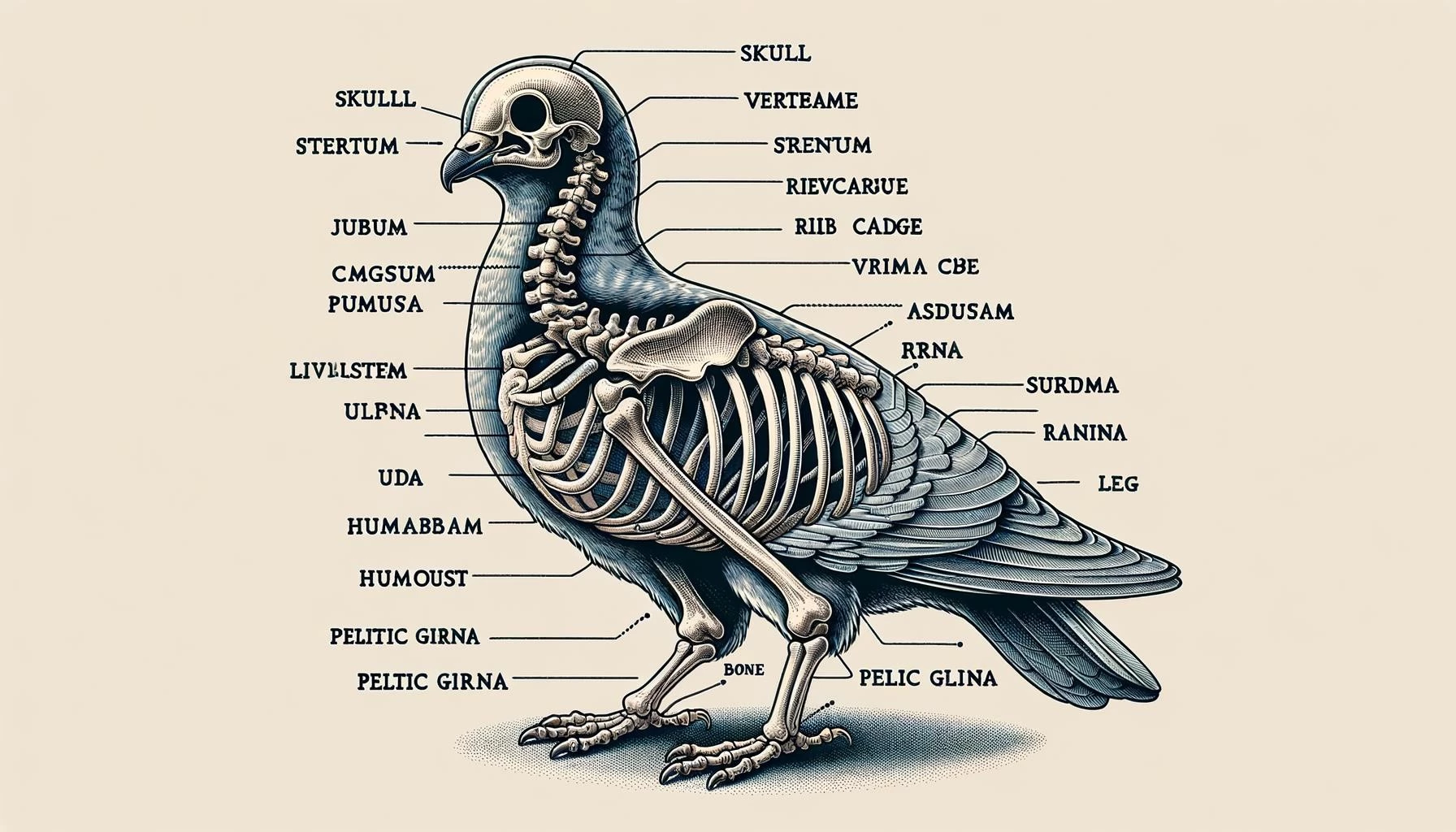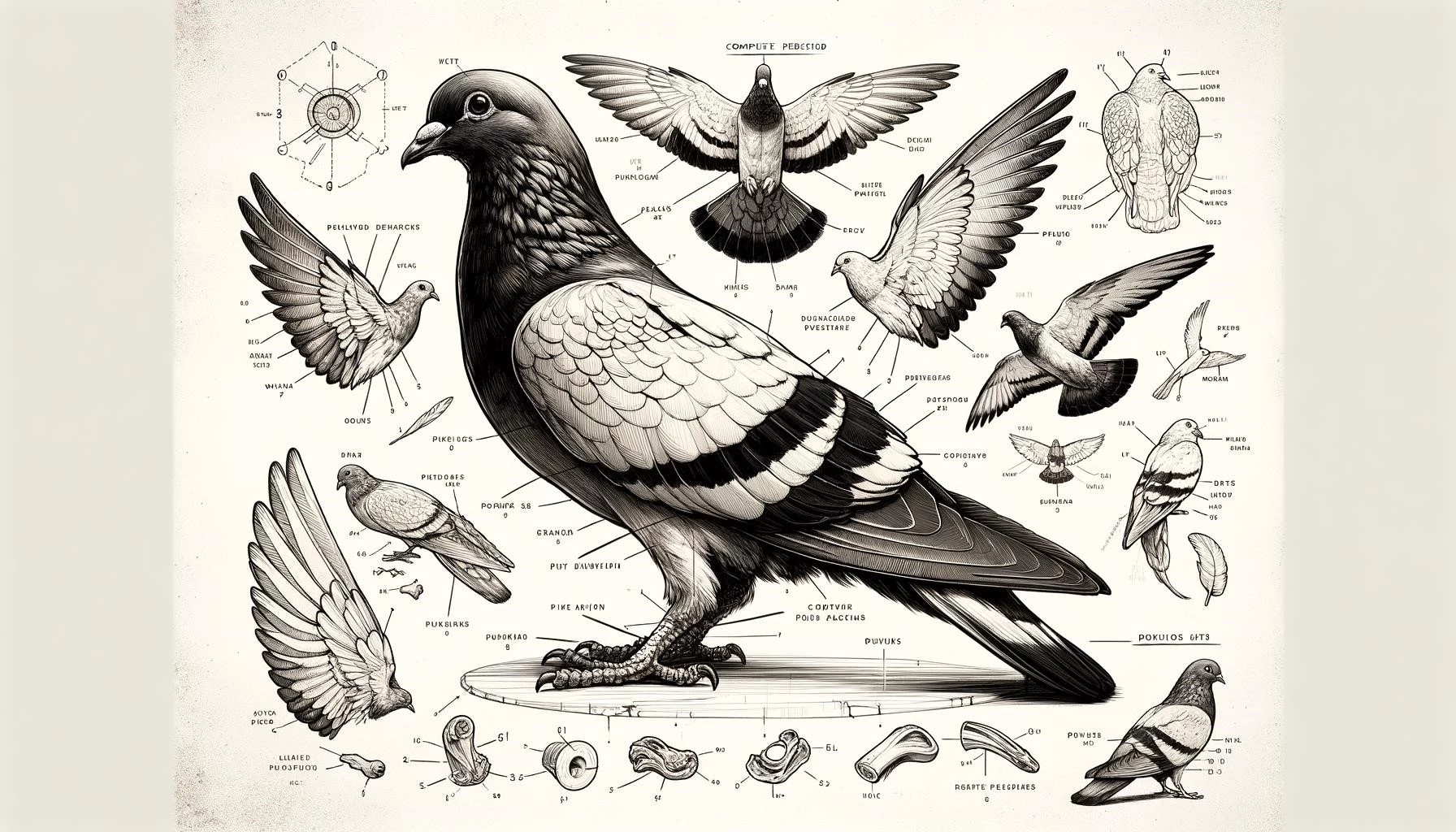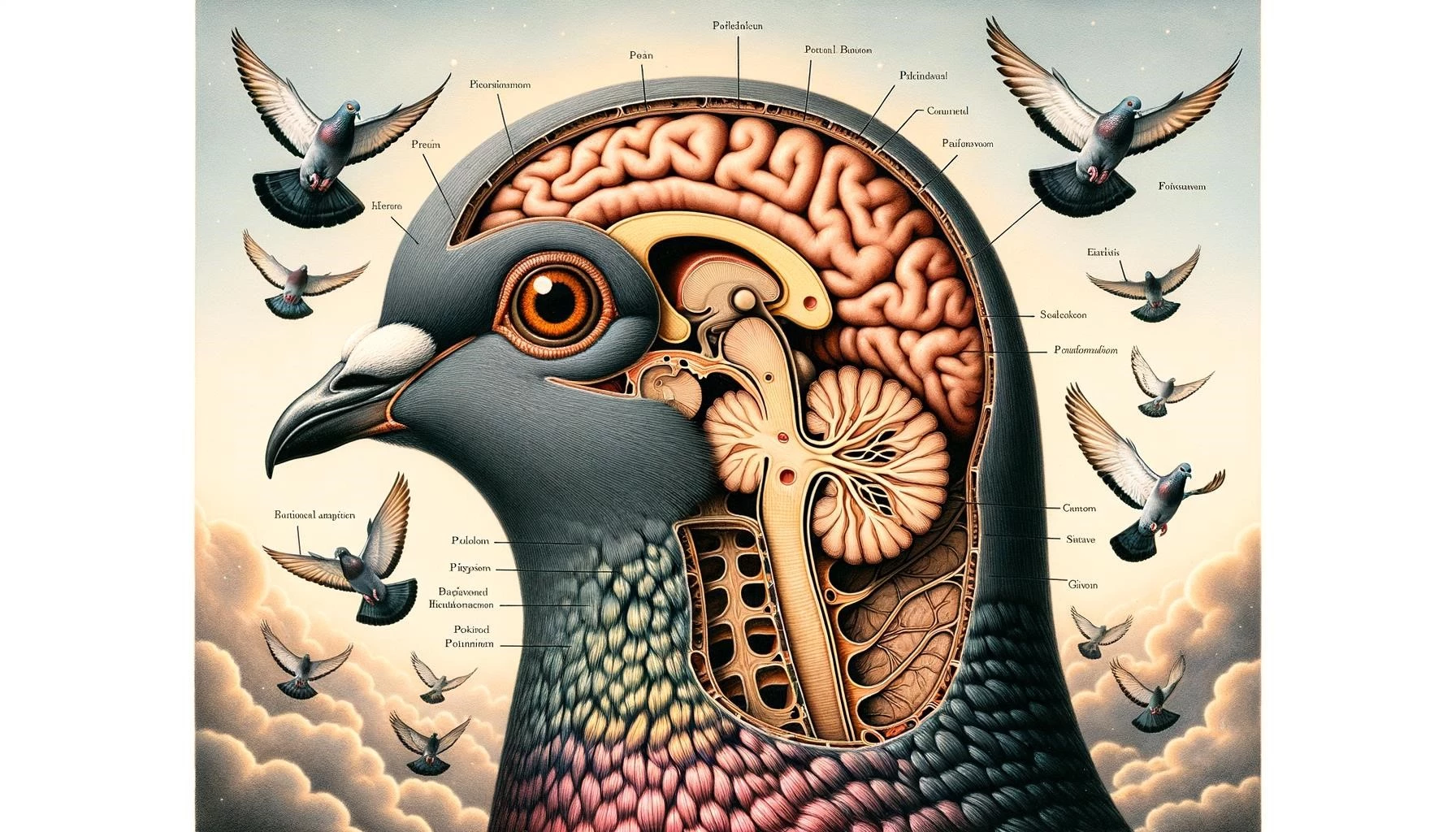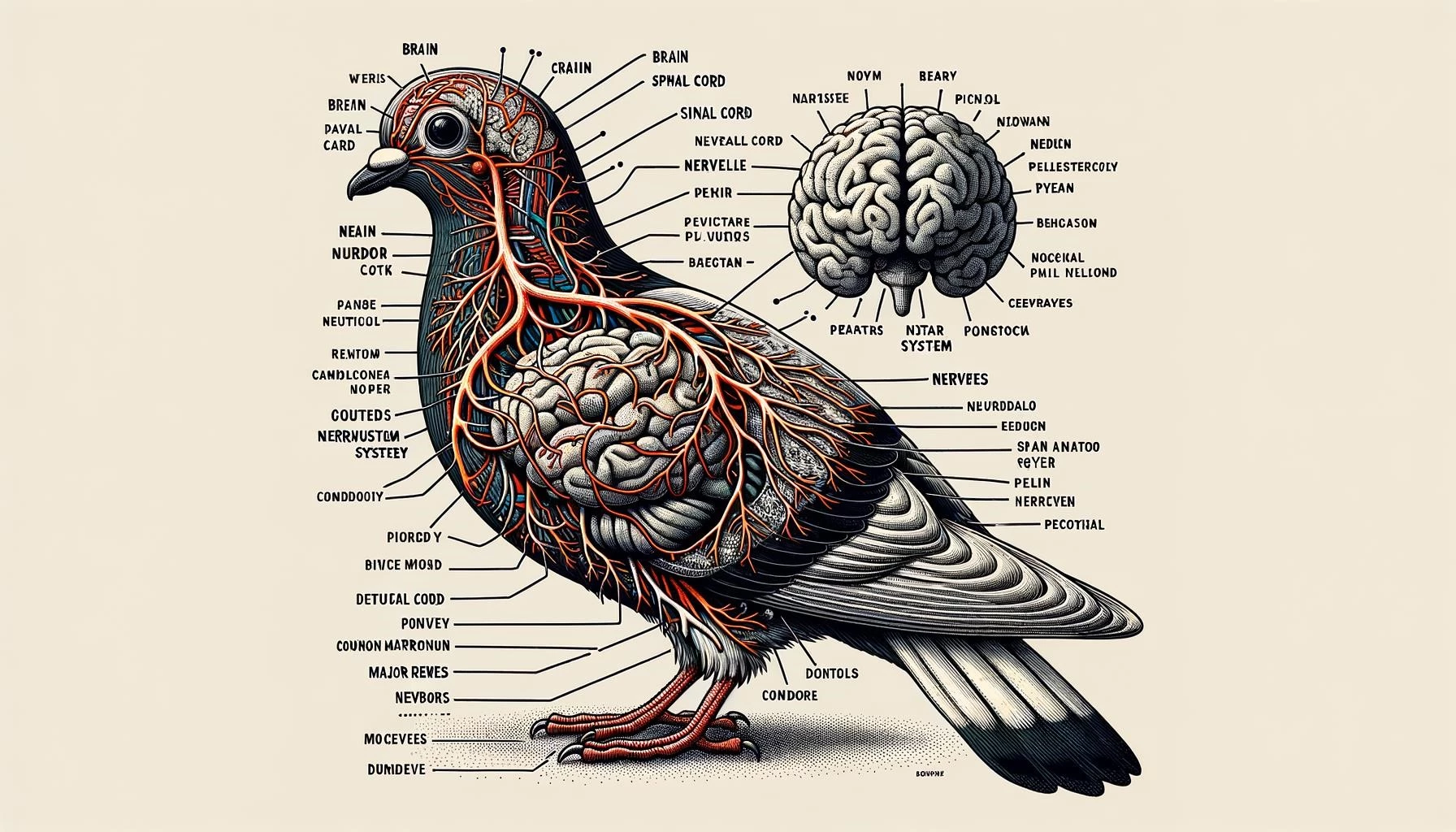Pigeons, like all birds, have a unique skeletal structure that enables them to fly and perform their various functions. The skeletal anatomy of pigeons is specialized and adapted to meet the specific needs of these birds. This article will provide an in-depth exploration of the pigeon skeletal anatomy, including key features, adaptations, and functions.
Key Takeaways
- Pigeons have a lightweight skeletal system that is optimized for flight and agility.
- The pigeon skeleton is divided into the axial and appendicular segments, consisting of the skull, vertebral column, ribs, sternum, pectoral and pelvic girdles, wings, and legs.
- Pigeons have specialized skeletal adaptations for flight, including hollow bones, a keeled sternum, and well-developed flight muscles.
Anatomy of the Pigeon Skeleton
The pigeon skeleton is a complex structure that provides support, protection, and movement for the bird’s body. It is composed of various bones that are interconnected and arranged in a way that enables the pigeon to move and maintain its posture.
Axial Skeleton
The axial skeleton of the pigeon includes the skull, vertebral column, ribs, and sternum. These bones provide support and protection for the bird’s central nervous system, respiratory system, and vital organs.
Skull: The pigeon skull is compact and lightweight. It consists of several fused bones that enclose and protect the bird’s brain. The beak, or bill, is a specialized structure made of horny beak sheaths and underlying bone. The skull also houses the eyes, nasal passages, and the sockets for the attachment of jaw muscles.
Vertebral Column: The pigeon’s vertebral column, or backbone, runs along the central axis of its body. It consists of multiple vertebrae that are interconnected by flexible joints. The vertebral column provides support for the head, ribs, and wings, and allows the bird to maintain its posture and perform various movements. The pigeon’s neck is particularly flexible, allowing for a wide range of head movements.
Ribs: The ribs of a pigeon are slender and curved bones that surround and protect the vital organs in the body cavity. They attach to the vertebral column at the back and curve around the body towards the front. The ribs provide support and protection to the bird’s internal organs, especially the lungs and heart.
Sternum: The sternum, also known as the breastbone, is a flat and keeled bone located on the ventral side of the pigeon’s body. It serves as the attachment point for the flight muscles and helps to support the bird’s wings during flight. The keel or carina of the sternum is relatively long in pigeons to allow for the insertion of prominent flight muscles.
Appendicular Skeleton
The appendicular skeleton of the pigeon includes the pectoral and pelvic girdles, wings, and legs. These bones are responsible for the pigeon’s mobility, flight, and overall movement.
Pectoral Girdle: The pectoral girdle, also known as the shoulder girdle, consists of the scapulae (shoulder blades) and the coracoids. It attaches the wings to the axial skeleton and provides support and range of motion for flight. The scapulae provide the attachment sites for the flight muscles.
Wings: The wings of a pigeon are highly specialized structures that enable flight. They are composed of numerous bones, including the humerus, radius, ulna, carpometacarpus, and phalanges. These bones form the framework for the wings and allow for the extension, flexion, and rotation necessary for flapping and gliding during flight.
Pelvic Girdle: The pelvic girdle, or hip girdle, attaches the legs to the axial skeleton. It consists of the ilium, ischium, and pubis bones. The pelvic girdle provides stability and support for the legs and enables the pigeon to walk, perch, and maneuver.
Legs: The pigeon’s legs are adapted for walking, perching, and gripping surfaces. They are composed of several long bones, including the femur, tibiotarsus, tarsometatarsus, and phalanges. These bones provide support, stability, and flexibility for different types of movements.
Specialized Adaptations for Flight
Pigeons, as flying birds, have several specialized skeletal adaptations that allow them to achieve sustained flight and maneuverability in the air.
Hollow Bones: Pigeons, like all birds, have hollow bones that are lightweight yet strong. This adaptation reduces the overall weight of the bird, making it more efficient in flight. The hollow bones also serve as reservoirs for air sacs connected to the respiratory system, allowing for efficient respiration during flight.
Keeled Sternum: The pigeon’s sternum, or breastbone, has a prominent keel or carina that provides a large surface area for the attachment of flight muscles. The well-developed flight muscles, such as the pectoralis major and supracoracoideus, are responsible for powering the flapping motion of the wings and enabling flight.
Well-Developed Flight Muscles: Pigeons have highly developed flight muscles that allow for powerful and efficient flapping of the wings. The pectoralis major muscle, which is the main flight muscle, is attached to the keel of the sternum and provides the downward power stroke during flight. The supracoracoideus muscle, located above the pectoralis major, is responsible for the upward recovery stroke.
Overall, the skeletal anatomy of pigeons is well-adapted for flight and mobility. Their lightweight and streamlined skeletons, combined with specialized adaptations for flight, enable them to navigate the skies with agility and efficiency.









